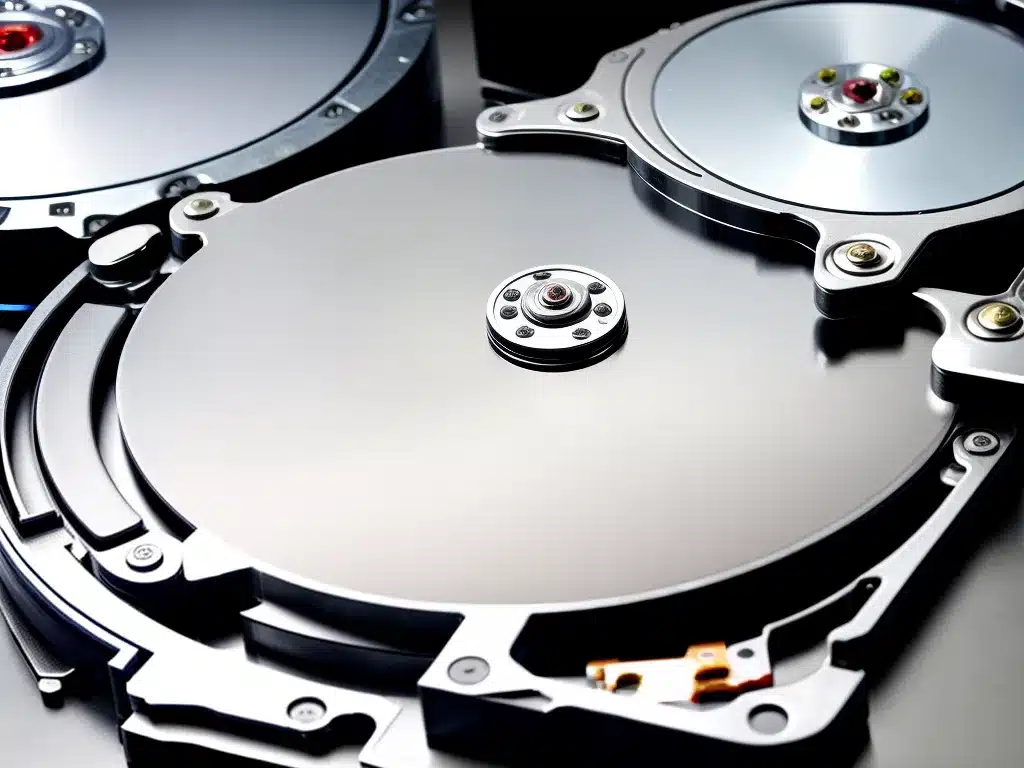
When a hard drive fails, it can be devastating to lose important files and data. As someone who relies on my computer daily, I know the sick feeling when a hard drive stops working. When this happens, many questions arise: Is my data gone forever? What are my options to recover lost files? How does data recovery work? This article provides in-depth information on recovering lost data from failed hard drives.
Understanding Hard Drive Failure
Hard drives can fail for many reasons, but most failures fall into three main categories:
Logical Failures
Logical failures occur when the file system or partition table on the drive becomes corrupted. The hardware components may still function, but the drive’s software is damaged. Common causes include:
- Accidental file deletion
- Virus or malware infection
- Operating system crash
- Improper system shutdown
Mechanical Failures
These failures stem from physical damage to the hard drive. For example:
- Hard disk read/write heads get damaged from contact with platters
- Spindle motor stops spinning
- Circuit board components overheat
Electronic Failures
Electrical components like the controller board, integrated circuits, etc can fail and prevent data access. Signs include:
- Drive not recognized by computer
- Clicking or beeping noises
- Burnt smell from overheating
Understanding the type of failure helps determine the best recovery method. Logical failures have a higher chance of data recovery than mechanical or electronic failures.
DIY Data Recovery Options
When a drive fails, the first instinct may be to attempt recovery yourself before paying for professional help. Here are some DIY options to retrieve data:
Data Recovery Software
Many software programs, like Stellar Data Recovery, EaseUS, or Disk Drill offer free trial versions to scan drives and preview found files. Paid versions provide full file recovery capabilities.
The software can retrieve data lost due to:
- Accidental deletion
- Format or partition deletion
- Virus infection
- System crash
Data recovery software is fairly easy to use. Simply install, select the failed drive for scanning, and restore discovered files.
However, this option depends on the drive powering on and connecting to a computer. Mechanical failures may prevent the software from running properly.
Remove the Drive for Diagnostics
If the drive fails to function in the computer, remove it and connect to another PC via SATA/IDE cable or external enclosure for diagnosis.
Signs it may still work:
- Powers on
- Spins up
- Recognized by OS
Then recovery software has a better chance of retrieving data. However, this approach is not foolproof. Severe mechanical or electronic failure can still block access.
Professional Data Recovery Service
For drives with physical damage or complex logical failures, DIY options may fail to recover data. Professional services are better equipped to handle these scenarios.
Professional Data Recovery Process
Specialist data recovery engineers use sophisticated techniques and cutting-edge technology to retrieve data from failed drives. Here is an overview of their general process:
Diagnostic Evaluation
First, the drive undergoes extensive evaluation to determine the cause and extent of damage. Professional tools like PC-3000 systems allow deeper analysis than consumer software.
Data Extraction
With the failure cause identified, data extraction begins using specialized recovery hardware and clean room facilities. Steps may include:
- Repairing or replacing damaged components like read/write heads or controller board circuits
- Imaging usable sectors through advanced imaging techniques
- Bypassing failed components using specialized forensic tools
Engineers will attempt non-invasive methods first, then escalate to invasive surgical techniques like platter transplant if needed.
File Reconstruction
The recovered raw data requires reconstruction into usable file formats. File systems may need rebuilding using proprietary tools.
Advanced techniques like file carving pull remnants of deleted files from disk sectors too. Validation checks recover intact files without corruption.
Return of Data
Finally, the extracted files get loaded onto new storage media like an external hard drive for return to the client. A full data recovery report is provided detailing recovered files.
Selecting a Data Recovery Service
Not all data recovery firms are equal. When selecting a service, key factors to consider are:
- Success rate – Choose a service with a strong record of recovering data from failed drives.
- Experience – Look for years of experience and qualified engineers. Newer firms may lack the proper skills.
- Capabilities – Ensure they can handle mechanical, logical, and electronic failures. In-house data recovery tools are ideal.
- Security – The company should offer non-disclosure agreements and data destruction after recovery.
- Customer service – Select a service with transparency and responsive support staff.
- Price – Quoted prices can vary greatly. Weigh costs vs capabilities when choosing.
I recommend researching companies thoroughly before selecting one. Recovering data is difficult, so use a reputable service known for delivering results.
Backup Your Data
Recovering data from a failed hard drive can be complex and costly. No method guarantees success, and you may still experience permanent data loss. That’s why I strongly advise backing up important files regularly.
Ideal backup options:
- External drives
- Cloud backup services
- Redundant RAID setups
- Tape drives for archiving
Backups allow easy restoration when drives fail. Please learn from my mistakes and implement a backup plan now before disaster strikes!
In Closing
Losing access to important data is stressful and disruptive. While recovering files from a failed hard drive poses challenges, solutions exist in many cases. Understanding the common failure types helps determine the ideal recovery options. DIY software tools may work for some failures, but severe physical damage often requires professional data recovery using specialized tools and techniques. To avoid reliance on recovery, implementing reliable backups is always wise. Follow these tips, and your data has the best chance of rescue if ever your hard drive fails.












